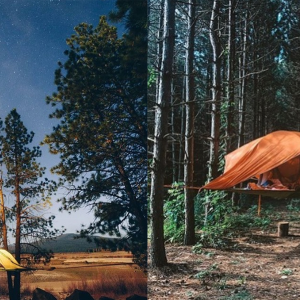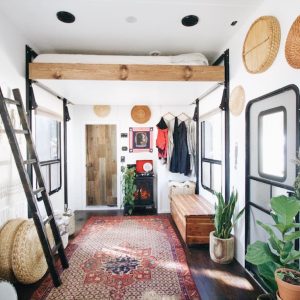It’s not just the lack of affordable space that has resulted in more people in Japan living in tiny houses: increasingly, they do so out of idealism. Journalist Ingrid Houtkooper talks to three Japanese tiny house dwellers. One of them is Saho.
Saho began building her house while at school—she had no job and only a small student loan. “We learned how to make different types of model wooden houses so we could get the techniques right and I got to keep all of the materials,” she says. “I used the best beams I could find to build it. I made the walls out of clay and straw, and finished them off with drywall. It keeps the house warm in the winter and cool in the summer.”
Grass, moss and flowers grow on the roof and act as natural insulation. The prefab cabin is now the bedroom. Saho expanded it with a kitchen, living room and toilet. A shower and beautiful wooden bathtub stand separate from the living area. Saho used a traditional Japanese technique to preserve the wood in the house. “The technique is called Shou Sugi Ban,” she explains. “I burned the top layer with a blowtorch and then sanded it. This makes the wood beautifully dark and it is better protected against weather.”
Saho did everything herself. “I even did the stained glass windows and the doors,” she says. “The living space is about nine-and-a-half square meters. As the house is smaller than ten square meters, I don’t have to follow all the building regulations.” The bathroom doesn’t count toward the total area: it’s stand-alone and doesn’t have a roof, so according to Japanese law it’s not a building. “During the winter I cover the bath area with plastic, but it’s open in the summer,” says Saho. “I have my own rotenburo (a warm open-air bath). It’s great.”
The toilet is a composting toilet so it doesn’t need running water. A bucket full of sawdust and wood shavings sits next to it instead. The house is not completely off the grid. “I’m hooked up to power, but I don’t use much of it,” Saho says. “I use water from the well that I dug, and the water that is used in the house is heated with a homemade rocket stove. I also have a small solar panel that heats the bathwater.”
- More about tiny houses in Japan can be found in Issue 22.
Text and photography Ingrid Houtkooper















